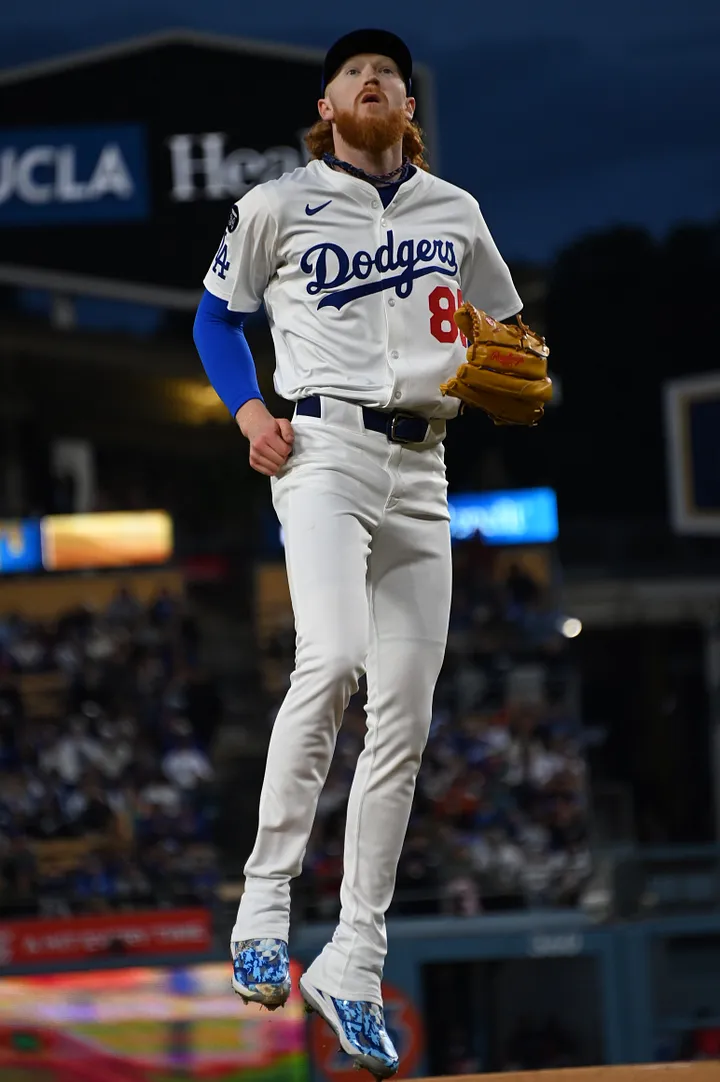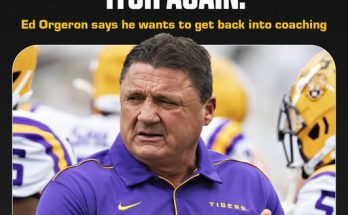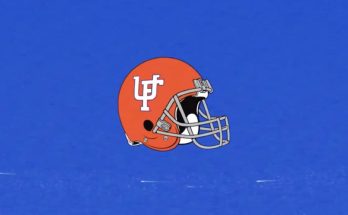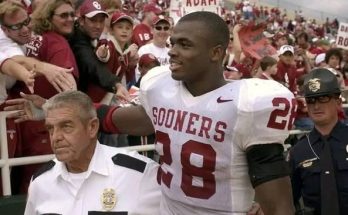Dustin May’s return to the Los Angeles Dodgers was nothing short of spectacular, providing a boost to a team that was already firing on all cylinders. His comeback from injury was long anticipated, and when he finally took the mound again, he proved why he was considered one of the most promising pitchers in the league. His performance not only reinforced the Dodgers’ dominance but also played a crucial role in their historic start to the season.
May, known for his electrifying fastball and wicked movement, had been sidelined for an extended period due to Tommy John surgery. His road to recovery was arduous, filled with rigorous rehabilitation, persistent training, and countless hours of fine-tuning his mechanics. When he finally stepped onto the field, all eyes were on him, and he did not disappoint. He delivered a dazzling performance that left both teammates and fans in awe. His ability to mix velocity with deception kept opposing batters guessing, showcasing his resilience and determination to return stronger than ever.
The Dodgers had already been making headlines with their phenomenal start to the season, setting records and maintaining an impressive winning streak. May’s return only added another layer of dominance to an already formidable rotation. With an arsenal that included a devastating sinker, a sharp cutter, and a curveball that seemed unhittable, he provided the Dodgers with yet another elite arm that opponents struggled to handle. His presence on the mound injected energy into the team, and his hunger to compete was evident in every pitch he threw.
The impact of May’s return wasn’t just felt within the pitching rotation; it had ripple effects across the entire team. The confidence in their starting pitching allowed the offense to play more freely, knowing they had a reliable ace on the mound. The defense, too, seemed to elevate its game, making remarkable plays behind him and ensuring that his efforts did not go to waste. His return was a morale booster, a reminder of the Dodgers’ depth and resilience.
May’s performance in his first few starts was nothing short of dominant. He attacked the strike zone fearlessly, limiting walks and forcing weak contact. His ability to control the game’s tempo made him an invaluable asset, and opposing hitters quickly realized that he was not the same pitcher they had faced before his injury. If anything, he had evolved, refining his command and demonstrating a maturity that suggested he was ready to take on the biggest challenges.
The Dodgers’ historic start to the season was characterized by dominant pitching, an explosive offense, and solid defense. With May returning at full strength, they solidified themselves as the team to beat. The synergy between the pitchers and hitters became more evident, as the confidence exuded by the entire squad translated into wins. Each series they played in felt like a statement, a declaration that this team was not just good but potentially one of the greatest Dodgers squads in history.
May’s return also had significant implications for the postseason outlook. While the Dodgers were already projected to be contenders, having another elite pitcher back in the rotation strengthened their case as World Series favorites. His ability to eat up innings, keep runs off the board, and generate strikeouts at an impressive rate made him an X-factor in the team’s long-term aspirations. It wasn’t just about winning regular-season games; May’s presence gave them an edge in October, when pitching depth becomes the most valuable asset.
Throughout his comeback journey, May credited the Dodgers’ coaching staff and medical team for their unwavering support. The organization had been meticulous in ensuring he returned at the right time, without rushing his rehabilitation. The patience paid off, as May’s return was seamless, and he appeared to be in peak form. His appreciation for the process was evident in his interviews, where he spoke about the mental and physical hurdles he had to overcome. His journey was one of perseverance, and his success story became an inspiration for younger players facing similar setbacks.
The fans, too, played a crucial role in May’s triumphant return. Dodger Stadium erupted in cheers every time he stepped onto the mound, a testament to how much he was missed and how much belief they had in his abilities. The electricity in the air whenever he took the ball was palpable, and his performances did not disappoint. He fed off the energy, using it as fuel to deliver some of the most memorable outings of the season.
His return also sparked discussions about the Dodgers’ long-term pitching strategy. With May back in action, the team had an embarrassment of riches when it came to starting pitching. This allowed them to manage workloads more effectively, preventing overuse of their key arms and keeping everyone fresh for the grueling season ahead. The depth in their rotation gave manager Dave Roberts the flexibility to make strategic decisions, optimizing matchups and ensuring the team remained in prime condition.
May’s return was not just about one player reclaiming his spot in the rotation—it was about resilience, determination, and the unwavering commitment of an entire organization. The Dodgers had already shown they were a powerhouse, but May’s comeback elevated them to an entirely different level. His contributions on the field were undeniable, but his story of perseverance resonated far beyond the box score.
As the season progressed, the Dodgers continued to ride the momentum that May’s return had provided. Each start he made reinforced the notion that he was one of the best young pitchers in the game, and his performances only got stronger as he regained full confidence in his arm. The Dodgers’ historic start was now being complemented by a revitalized May, a player who had worked tirelessly to return to his peak form.
For May, this season was about proving that adversity only made him stronger. He had gone through one of the toughest injuries a pitcher could face, yet he emerged better than ever. His fastball had its usual zip, his breaking pitches had sharper bite, and his command was as precise as ever. He was no longer just a promising young talent—he was a legitimate force to be reckoned with.
The Dodgers’ historic start was fueled by many factors—offensive firepower, defensive excellence, and a well-rounded pitching staff. But May’s return added an emotional and competitive boost that cannot be quantified by statistics alone. It was the intangible factor that reminded everyone why this team was special. His presence signified more than just another pitcher in the rotation; it symbolized resilience, depth, and the drive to be the best.
As the season unfolded, one thing became clear: Dustin May was back, and he was better than ever. His return had not only helped the Dodgers solidify their place in history but also set the stage for an unforgettable season. With him on the mound, anything felt possible, and the Dodgers looked poised to make an extraordinary run toward championship glory.



